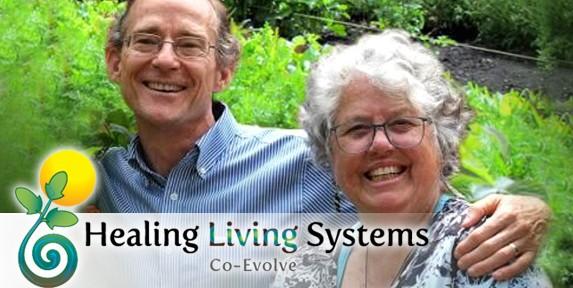How to Initiate a Local Foodshed Resilience Program
A Call to Action
Initiate a Local Foodshed Resilience Program
by Theo Ferguson; founder, Healing Living Systems and Stuart Valentine; founder, Centerpoint Investment Strategies
Imagine you are seated on a patio in the Tuscan countryside. The fresh mozzarella coupled with sweet tomatoes, ripe from the warm sun, pairs beautifully with the garlic sourdough bread and crisp local wine. The setting opens the heart and soothes the soul. The vineyard you overlook is in its crucial stage of ripening, that last conversion of acid to sugar, and the company of friends and family couldn’t be better.
Why are we drawn to such a scene? What distinguishes the Italian gestalt is that the essential character of the place grows out of community relationships fostered around a shared meal. But we don’t have to go miles across the sea to find this synergy. It can, and in fact, does exist in our own communities if we take the time to recognize and cultivate our foodshed’s infrastructure.
This is a Call to Action to the people who appreciate the healthy ripple effect of a vibrant local food economy. It’s for people who want to grow their own Italian Riviera in their backyards. These are the people who appreciate the importance good food has in generating healthy communities and have the will and the means to develop a healthy local foodshed. We can recognize and recommit to being part of a great place, deepening our rootedness in our very own communities. In essence we are calling on all of us, who appreciate the importance that good food has in generating healthy communities, and who want to grow our own Italian Riviera in our backyards as well as to do our part in building resilient foodsheds.
Last March, I was honored to participate in the City of Riverside, California’s GrowRiverside Conference, the fourth year of an initiative to elevate local food and agricultural systems, economies and education. At the Conference I had the opportunity to experience the beginnings of a comprehensive food system and the potential to integrate much of the infrastructure that I envision in a resilient foodshed. The City of Riverside’s “Green Belt” is 4,600 acres dedicated to farming; it includes co-op owned farms and agro-ecological farming practices. Agro-hoods offer owner-occupied co-op homes within a community of local growers. A local food hub aggregates and distributes the harvest in collaboration with CSAs, farmers’ markets, natural food stores, and the EBT programs that broaden access to healthy food choices. Educational initiatives for the public reflect the multi-faceted nature of local food systems and include programs in agro-ecological farming practices, financial literacy, coop ownership and management, ethnic and cultural adult education, public engagement to influence food and agricultural policy; health and wellness, and a parallel path in culinary arts. Riverside’s educational system integrates inquiry and food awareness, and elevates leadership capacity throughout the community. In 1998, Riverside invested in the Riverside Unified School District’s central kitchen that produces and serves 35,500 meals daily — breakfasts, lunches, super snacks at the end of the day, and summer meals — to elementary and high school students. Sixty-five percent of these meals are free and 48 percent are locally sourced. These K-12 students, who grew up with elementary school gardens and have eaten good food for years, developed a life-long curiosity and standard around their own vitality and the food that supports their good health. The people of Riverside are collectively creating a dynamic infrastructure to ensure that food systems fulfill the needs of a robust community foodshed for each community member of every age and background.
Riverside is developing a successful model, co-evolving its foodshed to be democratically driven, growing its food and farming infrastructure from the ground up as inclusive processes. This contrasts with well-intentioned charitable efforts that often impose “This will be good for you” on community members who are isolated and wary of programs from which they might benefit. Consider instead, inviting young people to participate in the processes involved – Life Path Career Development — so they know what they are eating, enjoy the benefits of good food while cultivating their personal gifts and self-esteem. Now go one step further; each of us can participate in learning about, and developing our living food systems in our own respective communities.
Lynne Twist, in her plenaries and her book Soul of Money, reminds us that we have the opportunity to live the most fulfilling lives because of the challenges we have set before us. She posits that by challenging ourselves to view our “culture of money” through a new lens and create a spiritual relationship with our finances, we are transforming ourselves and our values toward leading fulfilling lives. Currently, our capital system is locked into a conceptual mindset — instead of a fluid, systemic value system — that idolizes money above all else. Any nod to the economics of community benefits may move us towards philanthropy, whi ch in turn increases the disparity of income. Philanthropy commits funds to those causes we believe in, but it does not enable paths to ownership among those to whom we claim to be in service. What philanthropy does do, to some extent, is track community benefits through various metrics — often not transparently.
These metrics are further developed in critical local investment paths and long-standing valuation systems that undergird our thriving hometowns.
Read the complete article with informational charts and graphs as well as Theo and Stuart's bios at- www.greenmoneyjournal.com/june-2017/initiate-a-local-foodshed-resilience-program
=======



